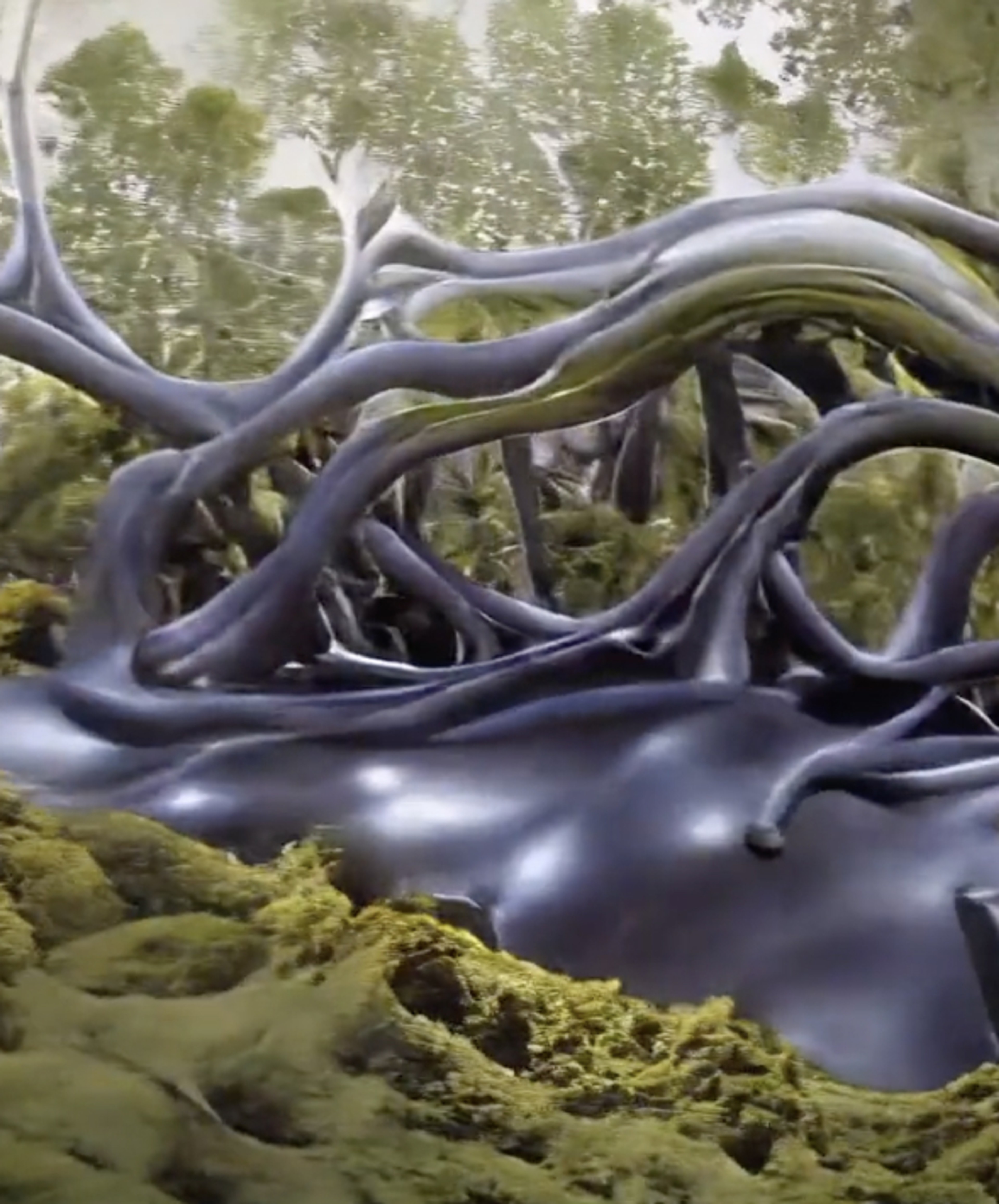“We Might Appear as Forest Fires,” Curator’s Statement
“We Might Appear as Forest Fires” is a multimedia performance that draws inspiration from writer Ursula K. Le Guin’s short story, “Vaster than Empires and More Slow.” The story explores the complexities of human nature and the influential force of communal awareness—including non-human awareness. I refrained from altering Le Guin's story, but I was interested in creating a new version of it. Our performance, featuring original choreography, opera, composition, and costumes, highlights embodied collective intelligence.
One character in the story, Osden, is an empath who deeply senses others’ emotions. He is part of an exploratory mission to World 4470 to survey its life forms. The team perceives the planet’s growing fear, and Osden comes to realize that the alien planet’s vegetation is sentient and shares a single consciousness.
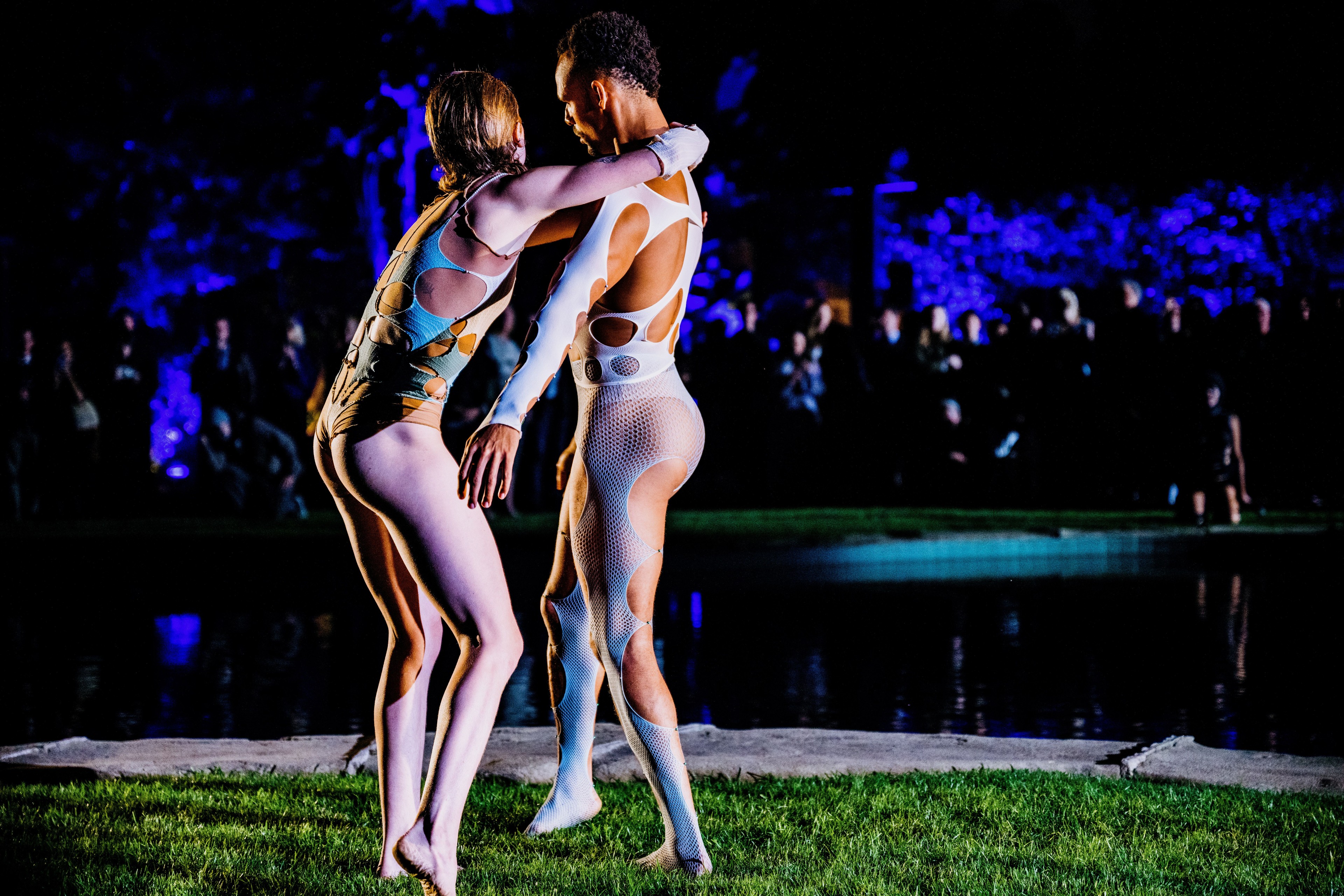
Our performance re-envisioned the spacious 1954 property in Beverly Hills. We transformed the acre-sized lawn, adorned with exquisite flora, as the remote world of World 4470. In the performance, as in the story, the Forest is an enigmatic ecosystem that discloses the planet’s collective intelligence. “We Might Appear as Forest Fires” is steeped in symbolism. The pool serves as a clock, and costume designer Julio Cesar Delgato’s work takes us back to a time when we wore leaves instead of clothes.
I was inspired by Osden's multifaceted character. He experiences isolation on both physical and psychological levels. Osden’s behavior mirrors the agitated tendencies of those around him. The team views him as a misfit and labels him as a “bastard,” further reinforcing his feelings of dislocation. They do not appreciate Osden's empathic sensitivity, causing him to struggle to understand why his colleagues appear so insensitive. But it is this very sensitivity, scorned by his human companions, that allows him to resonate with World 4470’s vegetal intelligence.
In the performance, the two dancers undertake the task of embodying the external and internal facets of Osden’s persona. Choreographer and dancer Layne Paradis Willis skillfully portrays Osden's outward persona, capturing his neurotic tendencies and restlessness through dance movements accompanied by dissonant tones and irregular rhythms, composed by ARSWAIN (Freddy Avis).
Dancer Mike Tyus, who portrays Osden’s internal persona, seeks coherence with a non-human life form. His personality is incredibly fragile and gentle as he forges an intensely intimate connection with the Forest. The language the planet and person use to communicate is unfamiliar, drawing a parallel to Sharon Chohi Kim’s eerie and undulating opera vocals. They open the performance with a repeated phrase, “We have a forest in our mind.” That it is ambiguous is integral to the goal of the performance: to transport the audience into a realm where the boundaries between individuality and interconnectedness are blurred, inviting reflection on the intricate tapestry of human existence and our place within the broader ecosystem.
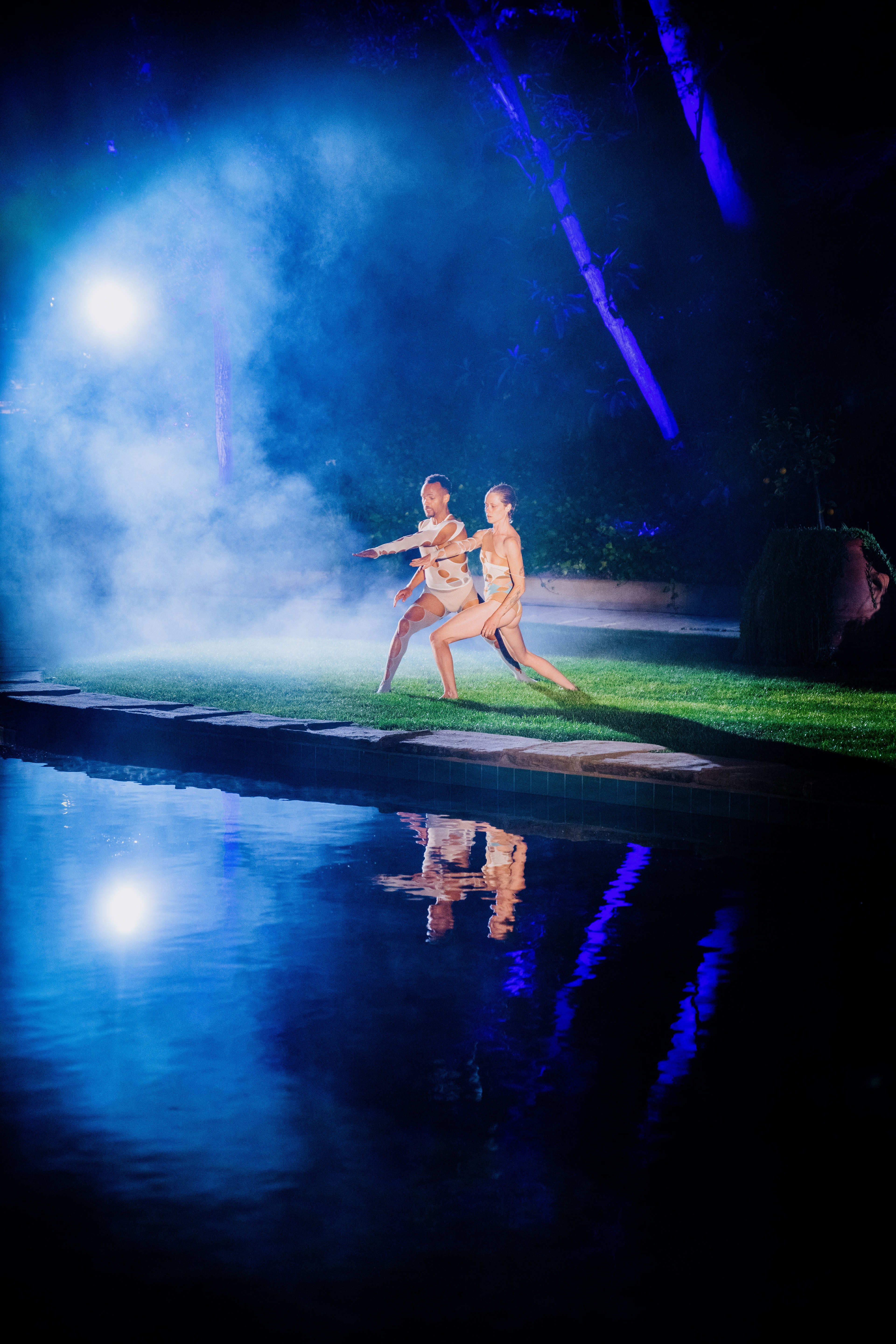
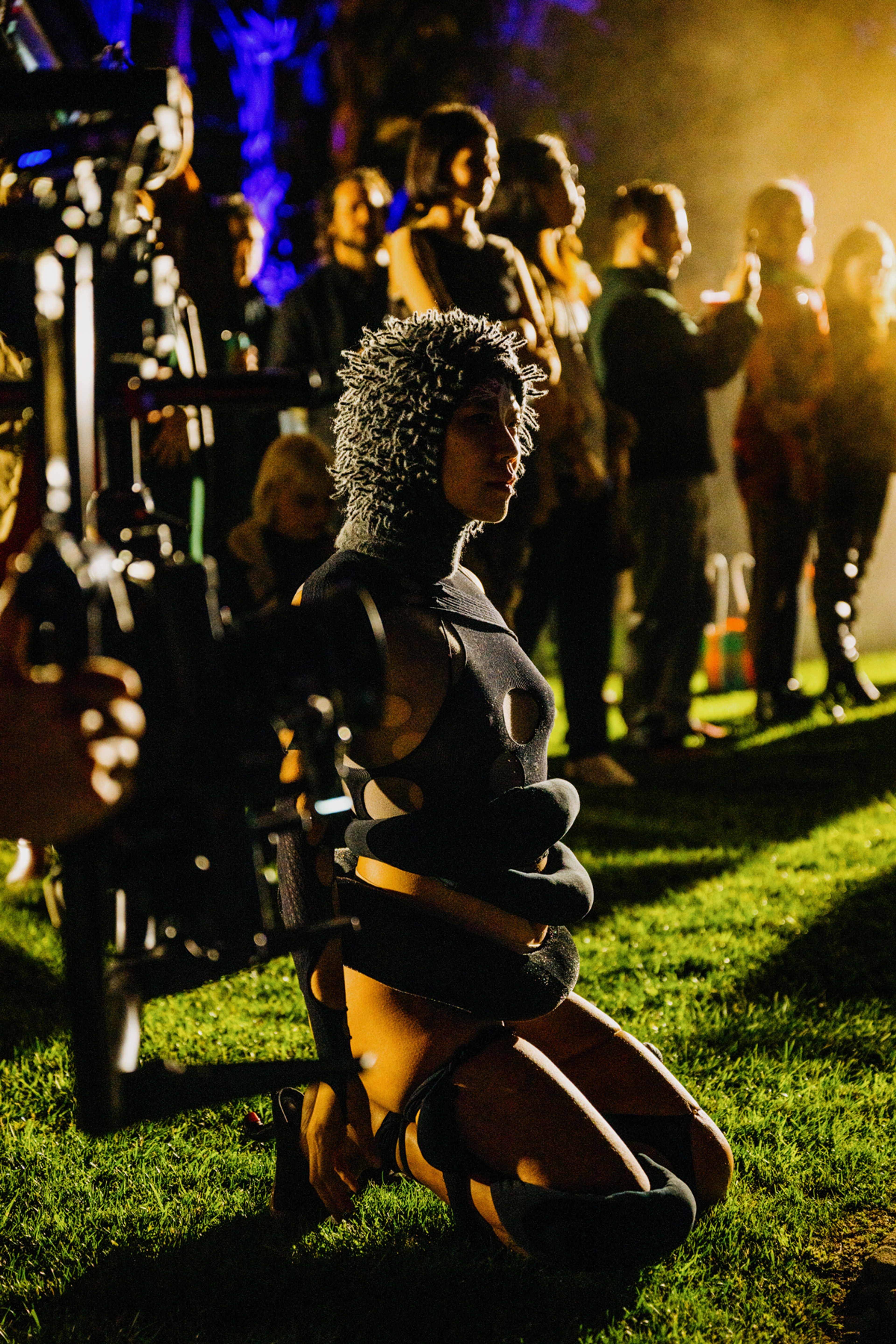
An important scene in the performance corresponds to the moment in which Osden truly senses World 4470: lying face down with open eyes, he communes with the roots beneath him. Director George Miller and I named this scene in the performance the "baptism scene," in which one dancer ceremoniously submerges the other into the water, initiating a split that is abrupt yet deliberate. This moment represents the convergence of External and Internal Osden, enabling him to unite his individual identities and learn the love of the Other. It symbolizes collective, embodied consciousness of, and a profound sense of unity with, the environment.
In the finale, the dancer collapses into the water. It signifies the beginning of Osden’s corporeal and psychic enfolding into World 4470 as he connects with something greater than humanity.
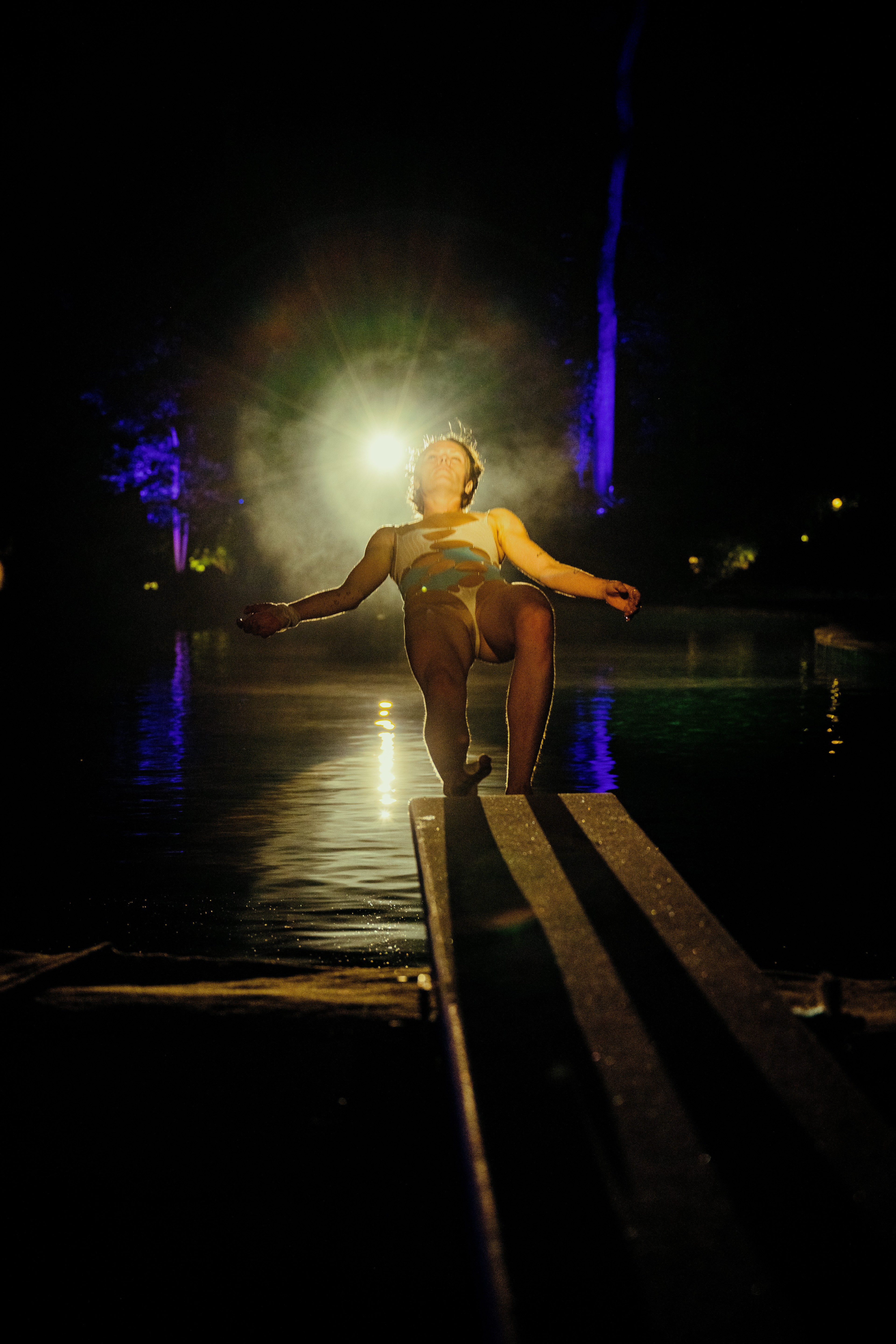
Alice Scope is a Ukrainian art curator and researcher based in Los Angeles. She explores the realms of Posthumanism, Postgenderism, and authenticity in machines. Scope is currently working with Vellum LA, a women-led new media art gallery, and Serpentine Arts Technologies. Scope’s passion is to create speculative worlds through gaming, XR, blockchain, and performance.
Scope’s recent exhibitions, including "Posthuman Island," "Webtaura," "Hotel Blue," and "Postgender," were showcased at the Berggruen Institute, SXSW, Gray Area, the Denver Digerati Digital Art Festival, and Vellum LA.



